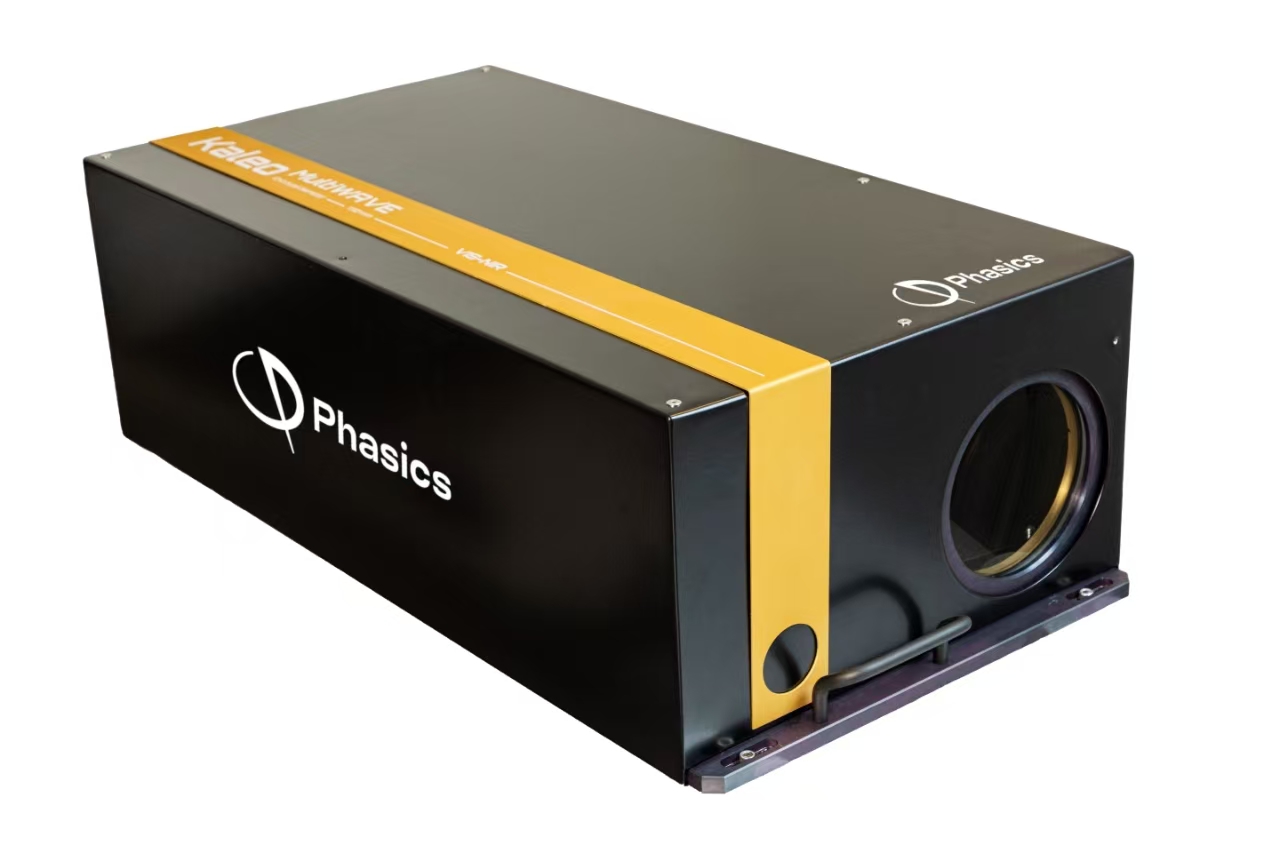Phasics
- Wavefront, MTF and QPI measurement solutions
- Products
- Applications
- Markets
- Company
- Contact us

March 24, 2025
Phasics' Kaleo MultiWAVE is an innovative optical metrology instrument designed to meet the diverse and evolving requirements of modern optical testing. It supports precise characterization of transmitted wavefront error (TWE) and reflected wavefront error (RWE) / surface across a broad spectral range, including ultraviolet (190–400 nm), visible to near-infrared (400–1100 nm), short-wave infrared (900–1700 nm), mid-infrared (3–5 µm), and far-infrared (8–14 µm).
The standard model accommodates optical components up to 130 mm in diameter, with larger options available upon request. With the ability to perform multi-wavelength analysis—customizable from one to eight wavelengths per device—Kaleo MultiWAVE ensures nanometer-level phase resolution and a high dynamic range exceeding 500 fringes. Kaleo MultiWAVE delivers accurate measurement of TWE and RWE without requiring vibration isolation, making it a compact and cost-effective solution.
Whether analyzing transmitted wavefront error for transmissive optics or reflected wavefront error in reflective surfaces, Kaleo MultiWAVE replaces the need for multiple interferometers or dedicated wavelength-specific systems. Its ability to quantify TWE and RWE at multiple wavelengths makes it ideal for the comprehensive evaluation of lenses, filters, windows, mirrors, and other optical components.
Kaleo MultiWAVE ensures repeatable, high-precision testing of both reflected wavefront error and surface transmitted wavefront error, all in one compact platform.

Figure 1: Kaleo MultiWAVE is employed at NOVA ASTRON as part of the European Southern Observatory's (ESO) MICADO project. As one of the first-light instruments for the Extremely Large Telescope (ELT), MICADO aims to achieve revolutionary ultra-high-resolution observational capabilities.

Figure 2: Extremely Large Telescope (ELT) instruments.Image source from: ESO/MICADO consortium

Figure 3: Comparison of how crowded stellar fields would appear when observed by the Hubble Space Telescope (HST, left), the James Webb Space Telescope (JWST, centre), and ELT’s MICADO instrument (right) for three different stellar densities. Image source from: ESO/MICADO consortium
The instrument features three core modules: a high-throughput imaging system equipped with 30 sets of broad and narrowband filters (0.8–2.45 µm), a single-slit spectrograph with a spectral resolution up to 20,000, and a small field high-contrast imaging unit dedicated to coronagraphy. Housed within a liquid nitrogen-cooled cryostat operating at 80 K, MICADO ensures peak quantum efficiency exceeding 95% in the near-infrared spectrum (0.8–2.4 µm).
In this project, Kaleo MultiWAVE was utilized to test various filters requiring high-precision measurements across different wavelengths, necessitating measurement equipment that mitigates chromatic aberrations. Kaleo MultiWAVE's multi-wavelength measurement capabilities and precision effectively meet these requirements, ensuring the filters' high reliability under diverse observational conditions.
The customized aperture reached 150 mm, featuring achromatic characteristics compatible with depolarizing optical components. It provides real-time phase acquisition and Zernike coefficient analysis display, with a field alignment range of ±2°, adjustable focus range of ±2.5 m, and repeatability better than λ / 900.
For more product information, please visit here.
